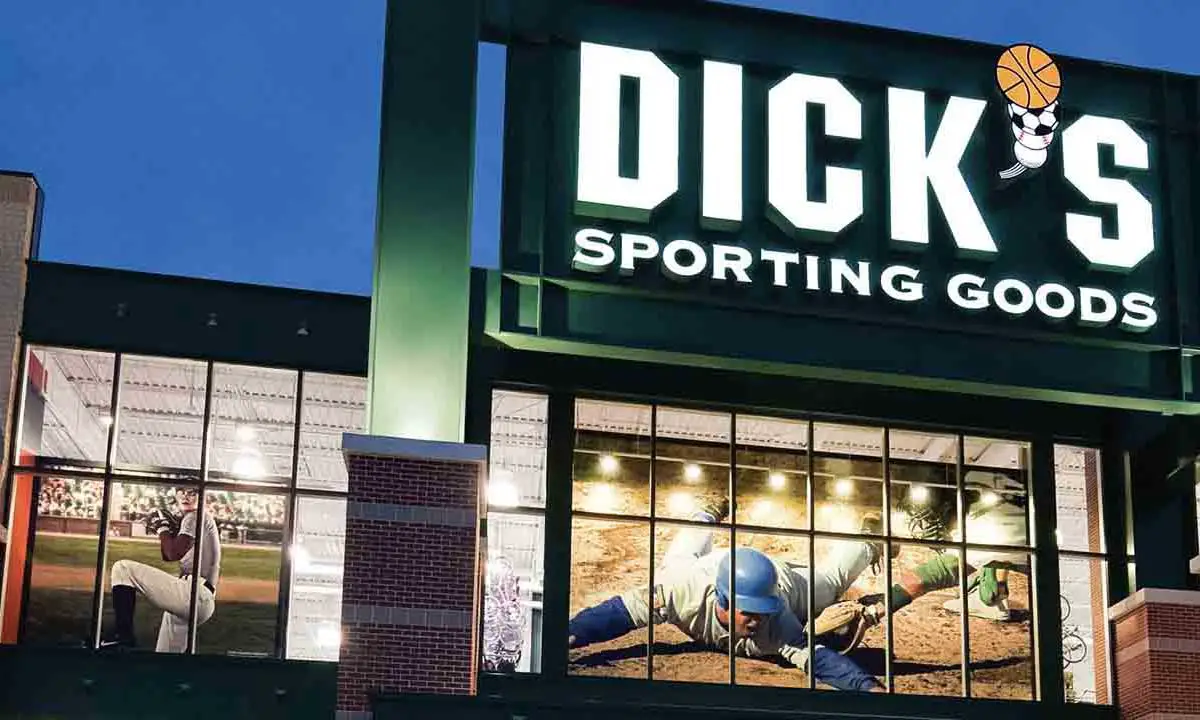In a $2.4 billion move, Dick’s Sporting Goods acquires Foot Locker to dominate Nike’s retail market, expand globally, and integrate two athletic retail giants. Here’s what it means.
Dick’s Sporting Goods Acquires Foot Locker for $2.4 Billion: A Strategic Gamble to Dominate Nike’s Retail Ecosystem
In a move that has sent ripples across the retail and athletic wear industries, Dick’s Sporting Goods has announced its plans to acquire Foot Locker for a staggering $2.4 billion. The deal, which is already being touted as one of the most consequential retail mergers of the decade, aims to consolidate market share, deepen ties with sportswear giant Nike, and forge a stronger global retail presence in a fiercely competitive landscape.
A Landmark Acquisition to Cement Nike Dominance
For Dick’s Sporting Goods, the acquisition isn’t just about expanding store count or increasing quarterly earnings—it’s a carefully calculated move to secure a stronger position in Nike’s orbit. Nike remains the undisputed heavyweight in the athletic apparel and footwear world, and this deal places Dick’s in the driver’s seat to command greater access to exclusive Nike products and limited releases.
By integrating Foot Locker’s footprint—especially its deep roots in urban retail environments and international markets—Dick’s now has a powerful lever to negotiate with Nike. The brand’s cachet with sneakerheads, younger consumers, and streetwear aficionados complements Dick’s own dominance in suburban, family-focused sporting goods retail.
“This is a transformational moment,” said Ed Stack, Executive Chairman of Dick’s Sporting Goods, during a joint press conference. “Nike has always been a cornerstone of our business, and this acquisition gives us a compelling opportunity to extend that partnership while reshaping the future of athletic retail.”
The Strategy Behind the $2.4 Billion Gamble
Dick’s isn’t acquiring Foot Locker purely out of opportunism. While Foot Locker has faced notable challenges in recent years—including declining same-store sales and restructuring efforts—it still retains immense brand equity, global reach, and loyal customer segments.
Founded in 1974, Foot Locker has cultivated a strong identity as a go-to destination for sneaker culture, particularly among Gen Z and Millennial shoppers. With stores across North America, Europe, Asia, and Australia, Foot Locker offers Dick’s immediate access to international markets, a strategic advantage for a company whose core operations have largely been U.S.-based until now.
“Foot Locker opens doors we’ve been looking at for years,” said Lauren Hobart, President and CEO of Dick’s Sporting Goods. “From New York City to Tokyo, the potential to merge our operational strengths and brand strategies could be extraordinary.”
Foot Locker’s Transitional Struggles: A Motivating Factor?
Despite its high-profile name and pop culture relevance, Foot Locker has been undergoing a turbulent period of reinvention. Since 2022, under CEO Mary Dillon’s leadership, the company has pursued an aggressive transformation agenda aimed at revamping stores, refining its brand identity, and diversifying away from over-reliance on Nike products.
Unfortunately, the road has been rocky. In its most recent quarterly earnings report, Foot Locker revealed a 2.6% decline in comparable store sales and a net loss of $363 million—most of which stemmed from significant goodwill and trademark impairments totaling $276 million. These numbers alarmed investors and placed the company on the radar as a ripe acquisition target.
“Transformation is rarely linear,” Dillon remarked in a prior earnings call. “We’ve made hard decisions—closing underperforming stores, reducing reliance on any single vendor, and rethinking what Foot Locker means to our core customer.”
Still, critics argue that these initiatives came too late, allowing competitors to steal market share and leaving Foot Locker vulnerable. The company’s faltering stock price only made the case stronger for a takeover.
Merging Two Retail Worlds: Urban Cool Meets Suburban Utility
One of the most pressing challenges for Dick’s post-acquisition will be integrating Foot Locker’s distinctive brand and retail model. While both companies operate in the athletic space, their customer bases, store environments, and branding philosophies couldn’t be more different.
Dick’s Sporting Goods operates spacious, inventory-rich locations often anchored in suburban strip malls. The stores cater to families, school sports teams, and dedicated athletes seeking quality gear for baseball, basketball, golf, and more. In contrast, Foot Locker thrives in urban centers, heavily trafficked malls, and youth-oriented streetwear markets.
This cultural and operational divide could either evolve into a winning combination or become a logistical nightmare. Analysts have already raised concerns about synergy risks, potential internal friction, and divergent customer expectations.
“There’s definitely brand tension to manage,” said Jessica Ramirez, a senior research analyst at Jane Hali & Associates. “But if they preserve the individuality of each brand while capitalizing on back-end efficiencies, this could be a net positive.”
Wall Street Is Watching—and Reacting Cautiously
Unsurprisingly, the acquisition has provoked a spectrum of reactions from Wall Street. While some investors are intrigued by the growth potential, others are sounding alarms over the complexity and risk involved.
John Kernan, a well-known retail analyst at TD Cowen, was among the most vocal critics. He downgraded Dick’s stock from “Buy” to “Hold,” warning that the merger could become a costly distraction rather than a strategic advantage.
“M&A of this scale has a dismal track record in Softlines Retail,” Kernan wrote in a note to clients. “There’s limited historical evidence that such mergers create lasting shareholder value. In fact, they often destroy it.”
Kernan emphasized concerns about increased debt burdens, possible integration failures, and operational dilution. “Dick’s has been a well-run, high-performing business. Absorbing Foot Locker could compromise that momentum,” he cautioned.
Nike’s Role: The Elephant in the Room
One of the key questions surrounding the merger is how Nike will react. Historically, Nike has maintained a somewhat guarded distribution strategy, preferring to control customer experience through its direct-to-consumer channels like Nike.com and SNKRS.
In recent years, Nike even pulled back from wholesale partnerships with underperforming retailers to protect its brand image. While Dick’s Sporting Goods remained one of the few to retain Nike’s favor, Foot Locker saw a reduction in allocations.
Now, with both under the same corporate umbrella, there’s renewed speculation about whether Nike will view the merger as a threat or a partnership opportunity.
“We have a long-standing and positive relationship with Nike,” Stack asserted. “We believe this deal enhances that relationship by reinforcing our commitment to excellence in how we sell and promote their products.”
Analysts are split. Some argue that Nike might see the consolidation as a more streamlined and controllable retail pipeline. Others fear it could trigger a further pullback from wholesale as Nike doubles down on its direct model.
Real Estate and E-Commerce Synergies
One of the most tangible benefits of the acquisition lies in real estate optimization and omnichannel alignment. With more than 2,000 combined retail locations, Dick’s and Foot Locker have an opportunity to rationalize overlapping markets, negotiate better leases, and repurpose underutilized space for hybrid fulfillment centers.
Foot Locker’s e-commerce investments—including mobile-first browsing, faster checkout experiences, and sneaker reservation apps—could provide immediate tech assets for Dick’s to incorporate into its broader digital ecosystem. The merged entity could dramatically enhance BOPIS (buy online, pick up in-store), last-mile delivery, and inventory visibility.
“Our goal is to offer the most seamless shopping experience possible—whether online, in-store, or on mobile,” said Hobart. “Foot Locker brings tools and know-how that will accelerate that mission.”
Store Closures? Limited, Says Dick’s
Naturally, fears about widespread store closures have emerged among employees and local communities. However, Dick’s was quick to tamp down these concerns. While some rationalization is expected, the company says it’s focused on growth—not contraction.
“We’re not planning massive closures,” said Hobart. “This is about building a stronger network, not tearing one down. Where stores make sense, they’ll stay. Where there’s duplication or inefficiency, we’ll evaluate.”
This balanced approach could help avoid morale dips and PR pitfalls, particularly in communities where Foot Locker serves as a longstanding retail anchor.
Looking Ahead: High Stakes, Higher Rewards
The Dick’s-Foot Locker merger is among the most daring strategic plays the retail sector has seen in years. With the athletic market projected to exceed $400 billion globally by 2030, the combined company aims to capture a broader swath of consumers, from soccer moms in Ohio to sneakerheads in Seoul.
If executed correctly, the deal could generate billions in added value through increased buying power, enhanced supplier relationships, broader reach, and improved customer loyalty programs. Dick’s could become not just a national sports retailer but a global player in lifestyle and performance apparel.
Still, execution will be everything. Cultural alignment, integration speed, and sustained consumer trust will determine whether this is remembered as a visionary pivot—or a cautionary tale.
As Ed Stack put it succinctly, “We know the road won’t be smooth. But we believe in the long-term vision, and we’re confident that this is the right step for our company’s future.”
For now, all eyes remain on how the deal unfolds. One thing is certain: the athletic retail game just got a new scoreboard.

